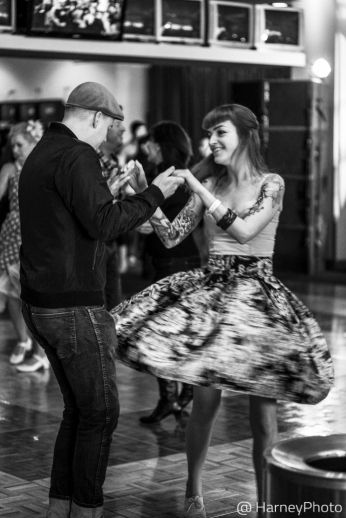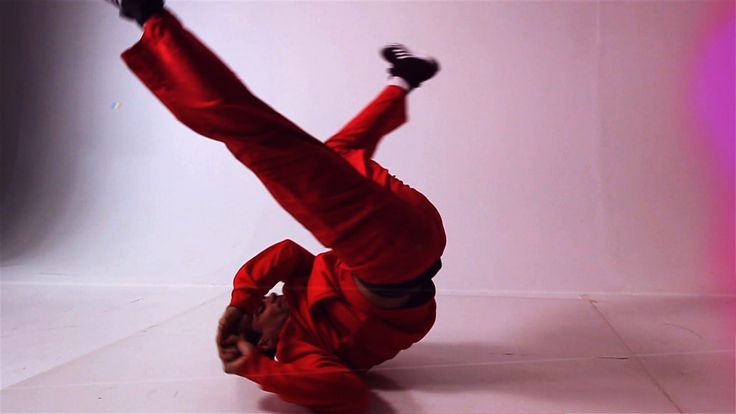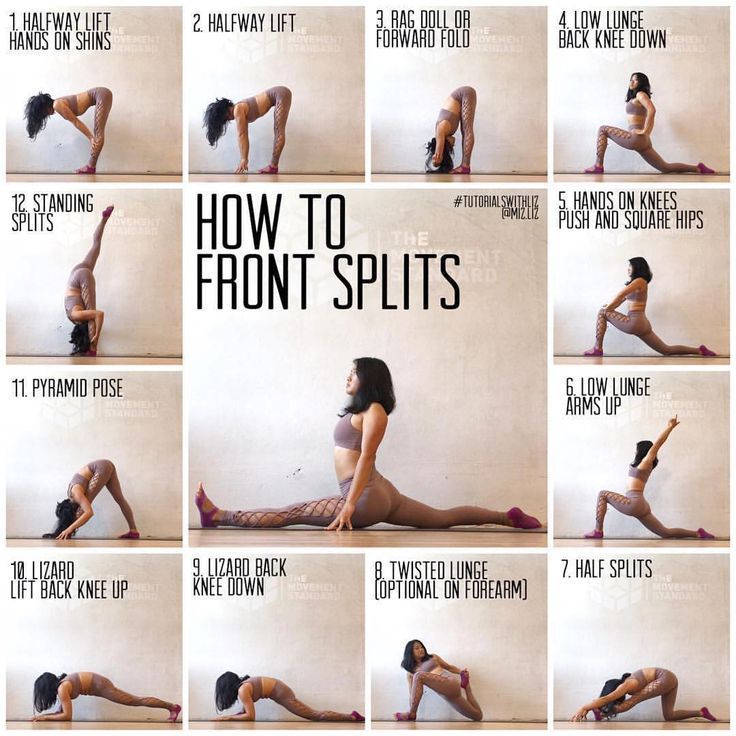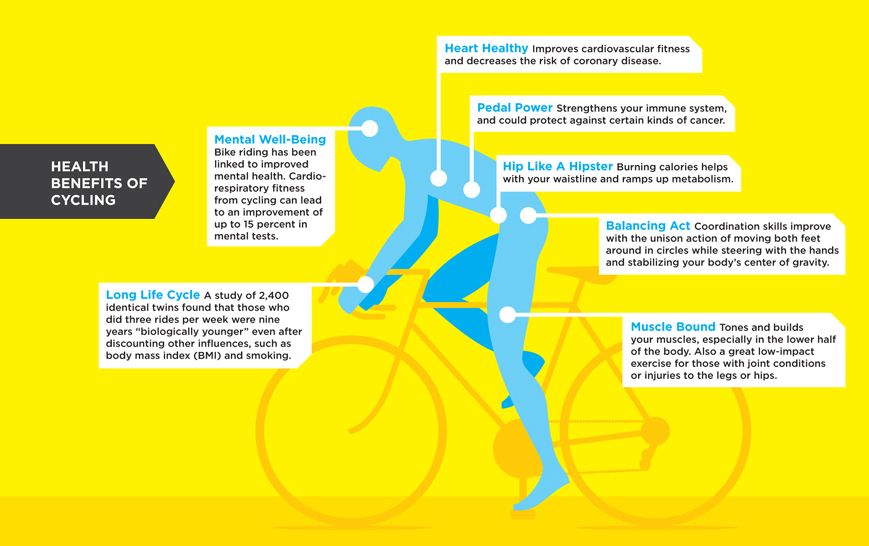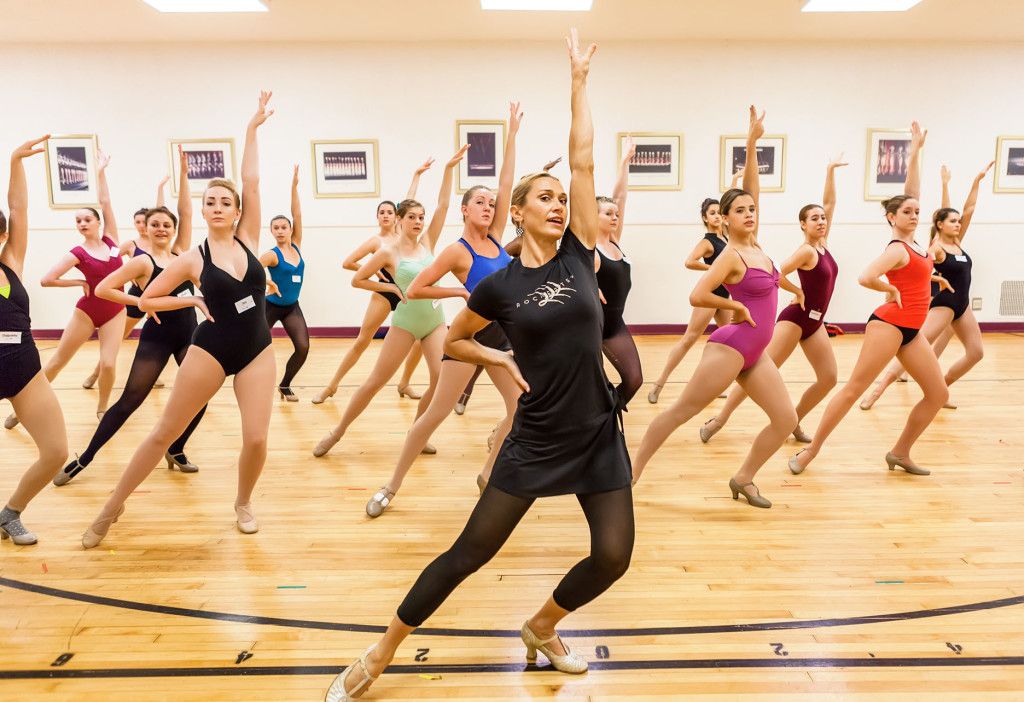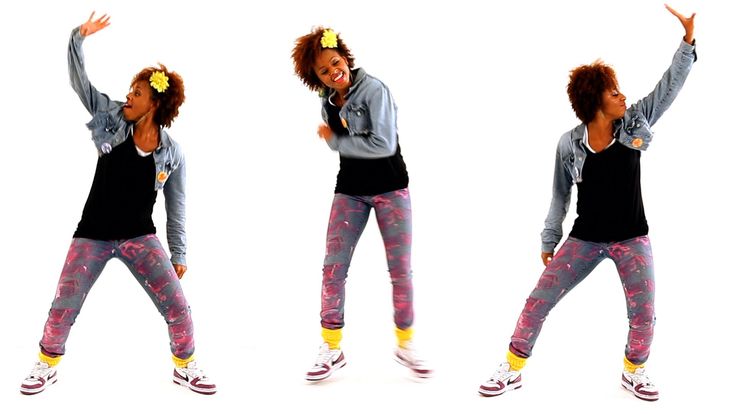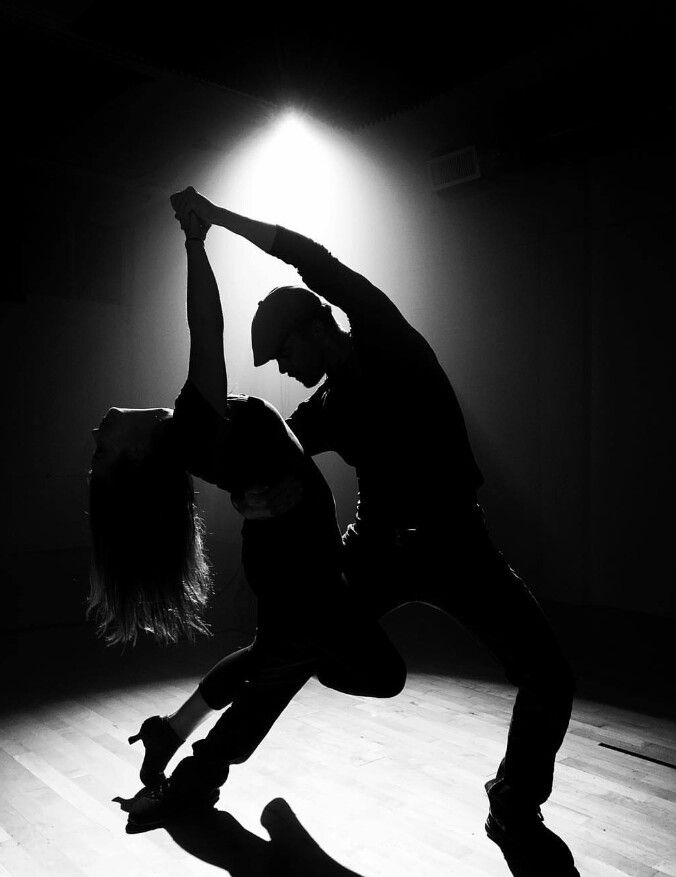How to become a flexible dancer
How to Boost Your Flexibility
"How can I get more flexible?" It's a question every dancer has asked themselves at one time or another. Whether you're attempting your first split or trying to nail a crazy high extension in your new dance uniform, flexibility is one of the key components to being a great dancer. If you want to improve yours, it can certainly enhance your rehearsals in the studio and performances on the stage. Just make sure you take the right approach. Here are some tips to help you in the process.
Tip #1: Take your time.
There's no fast way to get more flexible. So don't look for some quick fix on the Internet that will magically elongate your dance moves. It doesn't exist and you could actually wind up hurting yourself in the process. In fact, when you try to make too much progress too fast, you're going to end up with some kind of sprain or strain in your muscles, tendons or joints.
Instead, take a gradual approach. Try to slowly and patiently improve flexibility so that your muscles have the time they need to safely adapt.
Tip #2: Warm up first.
Another vital tip to improving your flexibility involves warming up first. If you start stretching with cold muscles, you're going to wind up with an injury because your muscles aren't limber and ready to stretch in the way you want them to. Doing so can also cause muscle instability that impacts both your strength and agility.
So rather than jumping into difficult stretches or exercises to enhance flexibility, warm up first with a few minutes of cardio. This can be as simple as some jumping jacks or running in place for a couple of minutes. Then ease yourself slowly into your first stretching pose and take it from there.
Tip #3: Listen to your body.
When it comes to stretching and building flexibility, everyone's body is different. What's easy and comes naturally for one dancer -- who's more limber -- might take months of work for another. That's why it's important to listen to your body and pay attention to what works for you.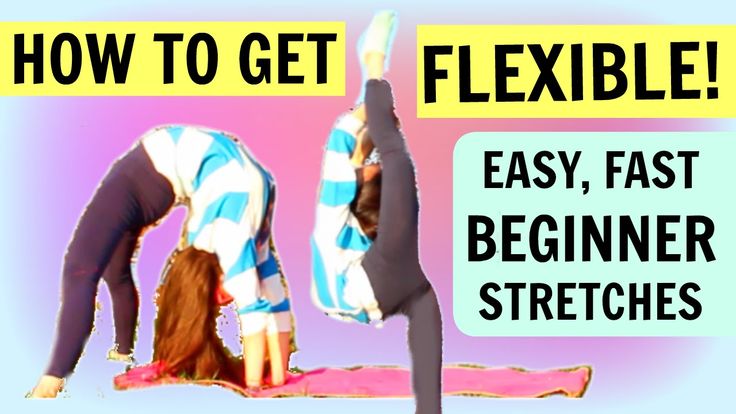 Some dancers are naturally built to be more flexible, so don't compare yourself to others during the process.
Some dancers are naturally built to be more flexible, so don't compare yourself to others during the process.
When you're holding your stretches, also be careful that you don't hold them for too long. In the beginning of class, aim for holding your stretches no longer than 15 seconds. Toward the end of class, however, you can hold stretches for longer - from 60 to 90 seconds.
Tip #4: Perform dynamic stretches before class and static stretches after.
According to Dictionary.com, a dynamic stretch is "a type of sports fitness routine in which momentum and active muscular effort are used to stretch and the end position is not held."
These types of stretches -- such as shoulder rolls, torso twists, and arm swings -- are best used just after warm up, at the beginning of class. Some other good dynamic stretches for the lower body include hip circles, forward and backward lunges, and leg swings. Regardless of which you choose, dynamic stretching is ideal for the start of class because you're getting your heart rate up, while also stretching and warming up muscles.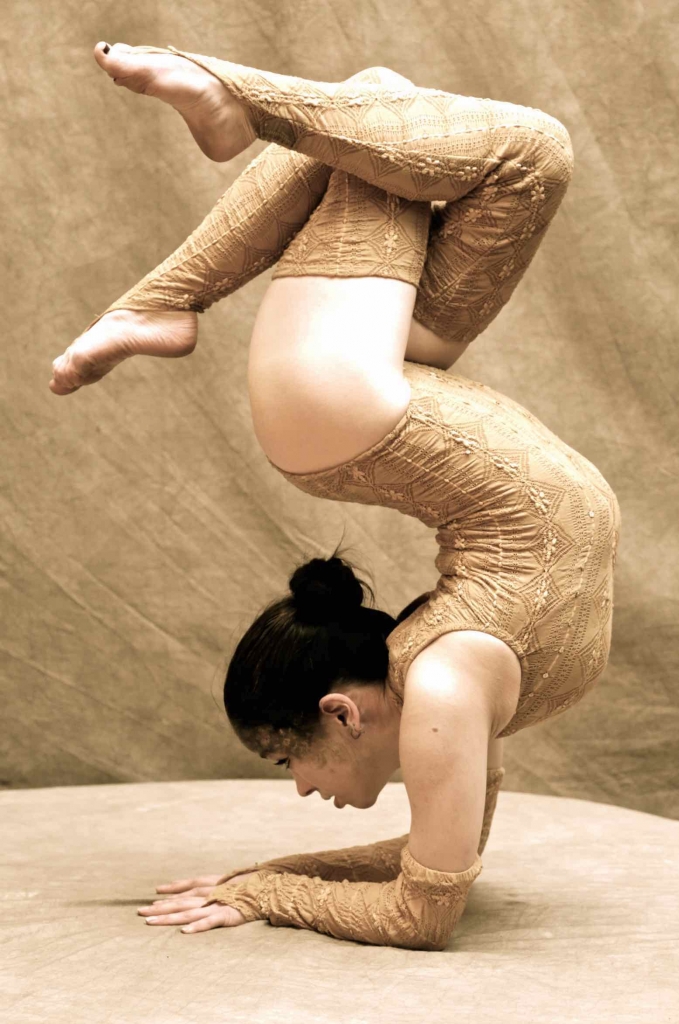
Static stretching, on the other hand, involves holding a certain stretch for a specific period of time. This is usually best done toward the end of class, during your cool down period. You should hold these stretches for at least 30 seconds, or even up to 60 or 90 seconds -- especially if you have a particular muscle you're trying to enhance flexibility in. At the end of your dance class, your muscles will be nice and limber, so you'll be able to push them further during static stretches.
Both dynamic and static stretches are good ways for dancers to improve their flexibility. However, it's best to avoid ballistic stretching, which incorporates bouncing movements where the muscles and tendons are rapidly stretched and relaxed. This can cause strain and can even damage tendons, joints and muscles.
Tip #5: Use strength training.
If you're trying to improve your flexibility as a dancer, then add some strength training to your workout routine mix. While flexibility improves the length of your muscles, strong muscles mean you can hold your dance positions for longer.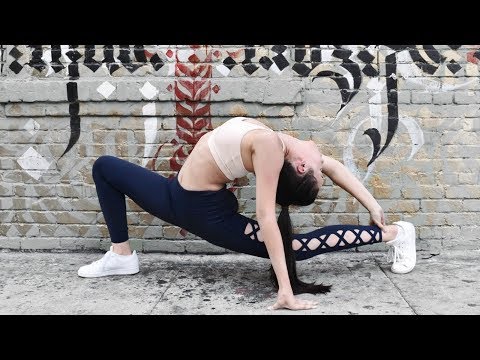
Tip #6: Don't push too hard.
If you're having sharp or severe pain, chances are, you've taken things too far. Don't continue on or try to push through the pain. Pain is your body's way of signaling that something is wrong. Likewise, don't stretch for too long before a big performance. Doing so can actually cut down on your ability to perform your jumps properly.
At Just for Kix, we offer all styles of dance uniforms and dance wear that are both stylish, as well as comfortable and functional. From hip hop pants to crop tops and sweatshirts, we've got you covered (literally)! Shop now and check out our collections.
Request a Just For Kix Catalog!
So you want to be flexible... — A Dancer's Life
L: Hyperextension R: Normal knee
There's always that one person in every class whose bones seem to be made of rubber (if indeed, there are any bones!) and who can lounge around in splits just as easily as they can hold a split penché; which is to say, effortlessly.
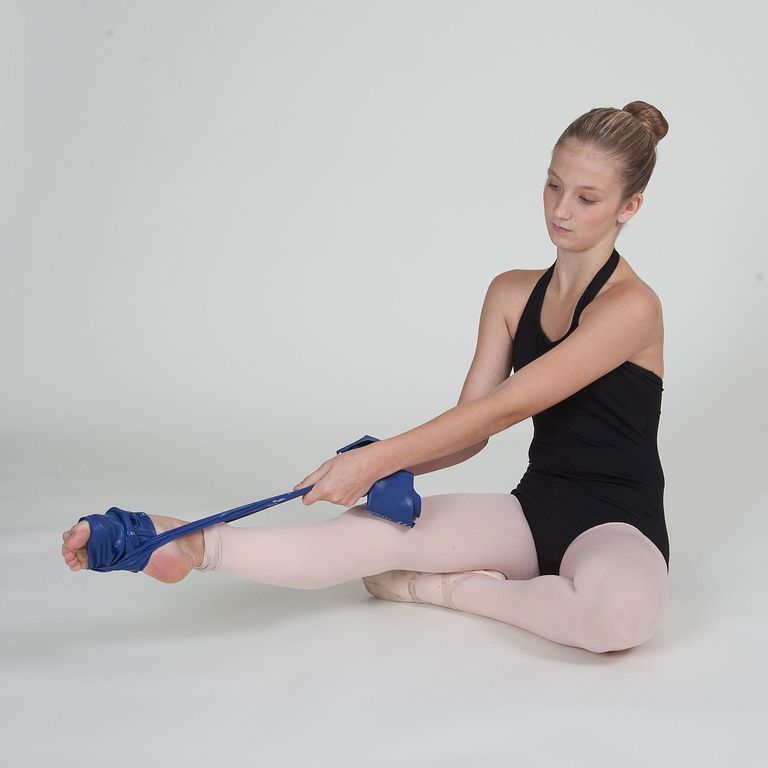 Now, this person might be you, but if it isn't.. fear not! We've got some helpful pointers to get you on track to acing that arabesque! First of all, it's important to remember that just as we are born with different body types, there are different types of flexibility too. What we mean by this, is that certain people will be born with a naturally higher capacity for flexibility. Bodies vary greatly from person to person and some people will have longer muscle fibers, allowing them to stretch their muscles further, and with more ease - and some people will have shallower, less restrictive joints and sockets, giving them a greater range of movement (you know those people with hyper-extension in their knees and elbows, yep, that's them) being 'flexible' is going to come a little easier to these individuals.
Now, this person might be you, but if it isn't.. fear not! We've got some helpful pointers to get you on track to acing that arabesque! First of all, it's important to remember that just as we are born with different body types, there are different types of flexibility too. What we mean by this, is that certain people will be born with a naturally higher capacity for flexibility. Bodies vary greatly from person to person and some people will have longer muscle fibers, allowing them to stretch their muscles further, and with more ease - and some people will have shallower, less restrictive joints and sockets, giving them a greater range of movement (you know those people with hyper-extension in their knees and elbows, yep, that's them) being 'flexible' is going to come a little easier to these individuals.Miss/Mr flexible that we were talking about above will probably fall into this category, so it's important not to get frustrated or annoyed with yourself if you've been trying for ages and you still can't touch your toes to your head whilst they can. .. It's okay, have a brief Lion King moment* and then get on with it. The key is to remember that how you start does not determine how you finish, just because you couldn't touch your toes in the beginning (and everyone else could) doesn't mean you won't be knocking everyone over with a perfect Grand Battement a little down the track. It's all up to you.
.. It's okay, have a brief Lion King moment* and then get on with it. The key is to remember that how you start does not determine how you finish, just because you couldn't touch your toes in the beginning (and everyone else could) doesn't mean you won't be knocking everyone over with a perfect Grand Battement a little down the track. It's all up to you.
*Scar: giving us a life lesson
So, you've accepted the fact that you're not the most flexible.. yet, and that getting flexible is hard, but you also know that flexibility is an important physical advantage, if not a necessity, for a dancer (and that you reallllyy want to have Darcy Bussel's arabesque, and split kicks like those dancers on SYTYCD!) now what are you going to do about it? Well, these exercises for starters!
Remember: Make sure your body is adequately warm (see our warm-up guide here) before you begin these stretches to prevent muscles seizing up and causing injury to yourself.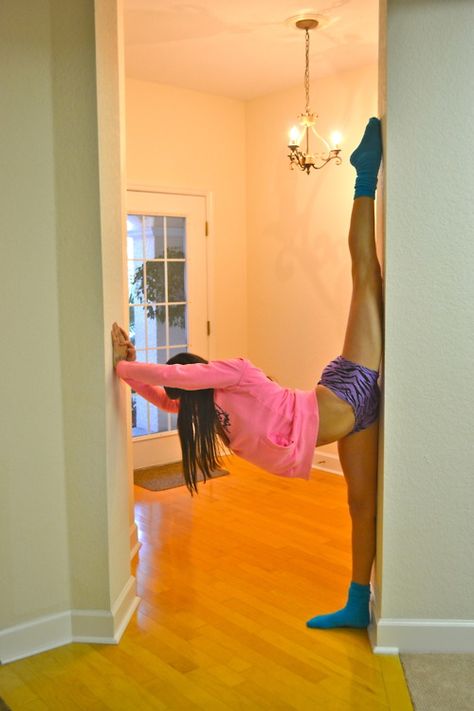 Don't push yourself too hard in one go, keep in mind that long term improved flexibility is much more rewarding than being uber flexible for one day, and then being so stiff you can't stretch all week!
Don't push yourself too hard in one go, keep in mind that long term improved flexibility is much more rewarding than being uber flexible for one day, and then being so stiff you can't stretch all week!
1. Stretching for back flexibility.
Lower back stretches. To begin, start by laying stomach side-down on the floor, legs straight out arms bent with hands placed next to either armpit, elbows by your side. Push the upper body up of the ground and towards the ceiling, keeping the hips firmly on the floor and pushing back away from your hands to give your back a gentle stretch (See Image 1.). Return to the neutral lying position, this time with arms by your side and bend the knees so that the feet are brought up and in towards the back. Reach your hands up and take hold of your ankles and pull the legs up and over towards the head whilst simultaneously lifting the torso up off the ground towards your feet (See image 2.).
Basic lower back stretch.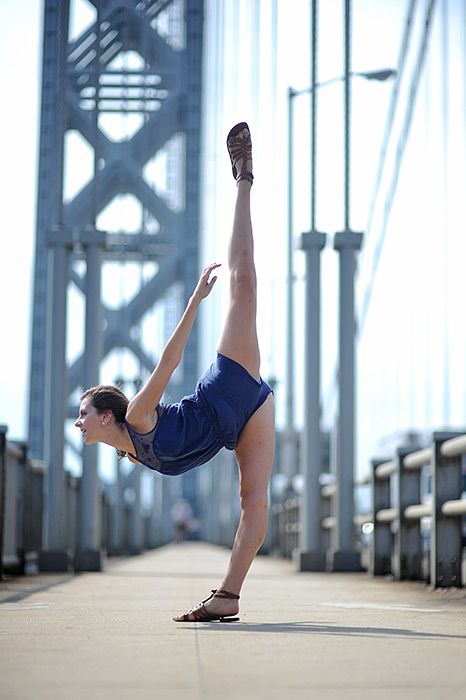
The second back exercise
Upper Back Stretches. Next, kneel on your knees, with the feet flat to the ground (so tops of the feet will be against the floor) and keeping everything below the hips vertical, lower the upper back and head backwards over the legs, allowing the arms to remain by your side. Go back as far as you need until a stretch is felt in the upper back (see Image 3.), if this is quite easy then raise the arms above the head and repeat, allowing the the pelvis and upper legs to also tilt backwards with the aim being placing your hands (stretched up above your head, not by your side as before), and finally your head on the floor (See Image 4.). This should also gently stretch your quadriceps.
Basic stretch
The advanced stretch
Advanced bridge: This is a great stretch to further increase your flexibility if you're comfortable doing a bridge (see Image 5. ) - If this stretch is still a little difficult for you then just keep practicing bridges, and re-asses in a couple of weeks. - Once you are up in a bridge shift your body so that your weight rests primarily over the arms, and gradually try to straighten you knees. This is very effective in stretching out the upper back and shoulders (See Image 6.). Don't worry if you can't get their just yet, gentle daily repetition will lead to gradual but significant improvement. If you can easily straighten your knees then relax back to a normal bridge, walk the hands a little closer to your feet and repeat until a reasonable stretch is felt. From here the next step is to bend the knees once more and lower yourself down so that your upper body is supported on your elbows, and your hands are folded under your head (see Image 7.)
) - If this stretch is still a little difficult for you then just keep practicing bridges, and re-asses in a couple of weeks. - Once you are up in a bridge shift your body so that your weight rests primarily over the arms, and gradually try to straighten you knees. This is very effective in stretching out the upper back and shoulders (See Image 6.). Don't worry if you can't get their just yet, gentle daily repetition will lead to gradual but significant improvement. If you can easily straighten your knees then relax back to a normal bridge, walk the hands a little closer to your feet and repeat until a reasonable stretch is felt. From here the next step is to bend the knees once more and lower yourself down so that your upper body is supported on your elbows, and your hands are folded under your head (see Image 7.)
The bridge.
Head to floor
Stretch for Arabesque/attitude: Now for a stretch that will aid with increasing your splits and back flexibility, improving the line of your arabesque/attitude and lengthening the quadriceps. Using a theraband, bend one leg backwards at the knee, and with one end of the theraband grasped in each hand, loop the centre over the flat top of your foot. Sometimes it can be good to have someone supporting you as you do this (but not necessary), once you've steadied your balance, begin to extend the leg up and backwards, keeping the supporting leg straight, as well as tension in the theraband and using it to pull your leg up and over your head. Make sure you don't let the upper body collapse, but hold yourself upright with as straight a back as possible (See Image 8.). Try to hold it here for 10 to 15 seconds and then repeat with the other leg.
Using a theraband, bend one leg backwards at the knee, and with one end of the theraband grasped in each hand, loop the centre over the flat top of your foot. Sometimes it can be good to have someone supporting you as you do this (but not necessary), once you've steadied your balance, begin to extend the leg up and backwards, keeping the supporting leg straight, as well as tension in the theraband and using it to pull your leg up and over your head. Make sure you don't let the upper body collapse, but hold yourself upright with as straight a back as possible (See Image 8.). Try to hold it here for 10 to 15 seconds and then repeat with the other leg.
Stretching for Splits/Arabesque
2. Stretching for splits / leg flexibility.
Inner thigh / Middle Splits stretches. The next few stretches will focus on improving the flexibility in your inner leg (adductors), hamstring and gluteal muscles to aid in getting a flatter side splits and higher kicks/battements.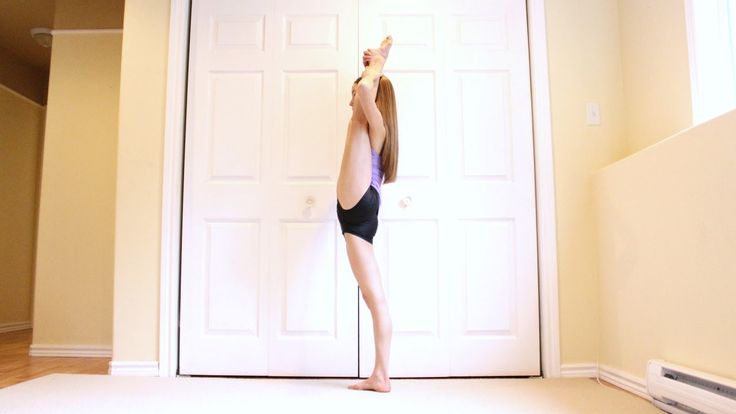 Remember to breathe and relax into the stretch, never force or 'bounce' it!
Remember to breathe and relax into the stretch, never force or 'bounce' it!
Standing Straddle Stretch: From a neutral standing position, split the legs so that the distance between the heels of the feet is approximately one and a half times the width of your shoulders, or a little wider, and you are now standing in a straddled position, with your feet facing forwards in a slight turn-out. Shift the torso to your right, so that the upper body is in line with the right leg and gradually lean forward trying to keep the spine relatively flat. At the same time use your hands to wrap around your ankle and gently pull the body closer; You should be aiming to press the entire upper body against your leg with the head reaching as close to the ground as possible (See image 9.). Return to the upright 'straddle' position and repeat to the left side. Perform the stretch again, this time keeping the upper body over the middle of the legs and leaning forwards, one hand on each ankle, until the chest is almost in between the legs, or as close as possible (See image 10. ).
).
Focus on getting the stomach and chest flat, rather than just the head.
View fullsize
View fullsize
Frog and Butterfly Stretch: Now for some floor stretches that will greatly improve your middle splits, hip range, and also your turnout. Please keep in mind that people with a very limited range of movement in their hips sockets may find these stretches to be too uncomfortable, so make sure you modify your routine as needed, not all stretches are suited to everyone which is why it's important to listen to your body.
Start sitting on the floor with your knees bent and the soles of your feet pressed together, legs drawn in and hands resting on your ankles. Gradually press your knees down towards the ground until a stretch is felt (See image 11), if no stretch is felt and knees can be flattened easily then hold the legs down, and keeping a long spine gradually bend forwards with the aim of touching your forehead to the your toes.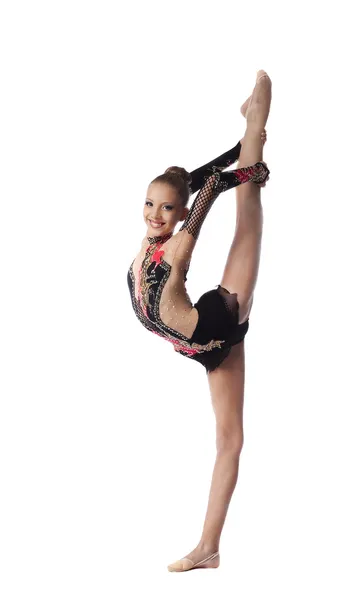
Keeping good posture is essential.
Next, position the body so that you're resting on your elbows and knees, back straight, and gradually spread the knees apart, pressing the hips down towards the floor and making sure you keep the knees in line with the hips (this bit is important!). It is helpful if you can get a friend or partner to gently press down on the lower back to increase the stretch. Once you have gone as far as you can, take several deep breaths and relax into the position, holding for 20 - 30 seconds before relaxing.
Finally, lay flat on the ground, stomach to the floor and draw the legs up in a turned out position with the soles of the feet touching (Don't sickle!). Keep bending the knees until you're in the 'frog position'. Unlike the previous stretch where the hips had to be held directly over the knees, the focus of this exercise is to keep the pelvis firmly connected to the floor, aiming also to get the ankles as close to the ground as possible. Don't be worried if your feet are stuck up in the air to begin with, some people will be more limited by their hips sockets (and turn-out capabilities) than others, and some will be able to get their hips and ankles to the ground immediately (See image 13.). Practice is the key here, with repetition everyone has the potential for improvement.
Don't be worried if your feet are stuck up in the air to begin with, some people will be more limited by their hips sockets (and turn-out capabilities) than others, and some will be able to get their hips and ankles to the ground immediately (See image 13.). Practice is the key here, with repetition everyone has the potential for improvement.
Hips remain pressed to the floor as knees draw in.
Next, sit up with your legs stretched out to the sides (in a relaxed middle split position) and make sure your toes are facing up towards the ceiling with no rolling forwards. If you like, you might find it beneficial to sit with your back against a wall to ensure you're not sinking or collapsing your posture. Now reach your left arm up from the side, and over your head, and still facing forwards bend towards your right leg, trying to feel the stretch all along the leg and up your side (See image 14.). Keep going until you feel a stretch and then hold for a count of 10. Relax, and repeat on the other side. Now repeat the exercise, this time shifting the upper body towards the leg and flattening all the way from your lower spine to your head until you are folded over your leg (See image 15.). This should give you a completely different stretch, as you engage new muscles to the ones targeted in the previous exercise. Once again hold the position for a count of 10 and repeat on the other side. Finally, return to the upright, forward-facing position and placing your hands in the centre, begin to walk them forward away from your body, allowing the chest to eased forward with them. Maintaining a straight a spine as possible, lower yourself towards the ground as you continue to walk the hands out. As you do this you should find your pelvis also rotating a little and coming forwards, placing you in a deeper, flatter middle split. Make sure to pause every few beats and take a couple of deep breaths, and then creep the hands forward a little further and repeat until hopefully you look like this (See image 16.
Relax, and repeat on the other side. Now repeat the exercise, this time shifting the upper body towards the leg and flattening all the way from your lower spine to your head until you are folded over your leg (See image 15.). This should give you a completely different stretch, as you engage new muscles to the ones targeted in the previous exercise. Once again hold the position for a count of 10 and repeat on the other side. Finally, return to the upright, forward-facing position and placing your hands in the centre, begin to walk them forward away from your body, allowing the chest to eased forward with them. Maintaining a straight a spine as possible, lower yourself towards the ground as you continue to walk the hands out. As you do this you should find your pelvis also rotating a little and coming forwards, placing you in a deeper, flatter middle split. Make sure to pause every few beats and take a couple of deep breaths, and then creep the hands forward a little further and repeat until hopefully you look like this (See image 16. )! Once you relax from the stretch be sure to shake your legs out a little bit so your muscles aren't storing the tension.
)! Once you relax from the stretch be sure to shake your legs out a little bit so your muscles aren't storing the tension.
Toes facing upwards, upper body facing forwards.
The body has now shifted to face the leg, toes remain pointed towards the ceiling (they may be flexed or stretched according to preference).
Flatten from the lower spine, so the back stays as flat as possible, this provides a much more effective stretch.
Et Voila! There you have it; A selection of fantastic stretching exercises that will help you improve your flexibility in leaps and bounds (not without practice and dedication though)!
Article by Elly Ford
Read Next:
Preventing Muscle Soreness
Pointe Shoes the Perfect Fit
Coping with Injury
Dance Advice, Fitness, New to Dance, Advice + Tips, Health + FitnessEnergetiksdance, stretching, dance advice, tips, ballet tips, flexibility, flexibility tips, splits, flexible, stretching tutorial, ballet stretches, dance stretches, So you want to be flexible, Elly Ford7 Comments
0 Likestypes of flexibility and basic stretching exercises
Contents
A flexible body, elastic muscles and mobile joints are the key to beauty and health at any age. Flexibility is not only innate, but also an acquired quality. Without a doubt, every dancer should have it.
Flexibility is not only innate, but also an acquired quality. Without a doubt, every dancer should have it.
What is flexibility
Flexibility is the ability of the body, namely muscles, ligaments and joints, to give maximum amplitude in various movements and physical exercises.
The flexibility of the body depends on genetics, the structure of the joints, the elasticity of the tendons. This indicator is also related:
- with age. Children and adolescents tend to be more flexible than adults;
- with floor. Women are naturally more flexible than men;
- with the level of physical fitness and fitness.
Types of flexibility as it happens
There are several varieties:
- Dynamic flexibility is the maximum possible range of motion in a joint without any outside help. For example, standing against a wall, the athlete raises the leg to the highest possible level and holds it for several seconds.
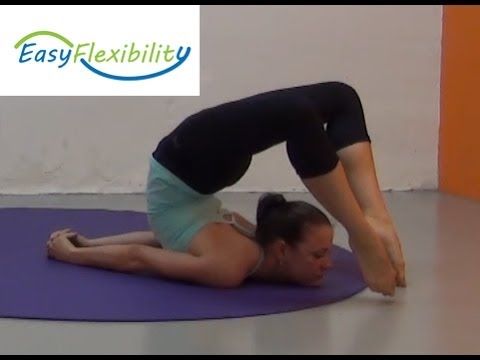 Also, the dynamic view is fixed when performing exercises, for example, with swings;
Also, the dynamic view is fixed when performing exercises, for example, with swings; - Passive (static) flexibility always exceeds active dynamic. It is achieved with an external impact on the joint. For example, the athlete or his partner holds the raised leg with the hand in maximum amplitude;
- Special refers to the mobility of specific joints. Different sports and dances require different levels of joint mobility;
- Anatomical. Habitual daily movements in terms of joint mobility are very limited. Use of the reserve of pledged flexibility up to 95% occurs only during special classes;
- Excessive flexibility is dangerous, as the stability of the joint is lost and the maximum stretching of muscles and ligaments is reached. This is fraught with injuries (dislocation, rupture, sprain).
Sign up for a trial lesson
Why flexibility is important for dancers
Good flexibility is the key to beautiful amplitude movements and speed of changing positions
A flexible body is more responsive, plastic and enduring.
Good amplitude in the work of all joints gives excellent coordination between all parts of the body.
These motor indicators are extremely important in dance. Movable joints and stretch-responsive muscles make the body supple, able to quickly perform complex movements and ligaments.
Flexibility can be improved by regular stretching.
What exercises help to develop flexibility
Stretching (from the English "stretching") always begin with a quality warm-up of the whole body. Pulling muscles and ligaments is possible only in a heated state. To do this, it is enough to perform a warm-up of 2-3 dynamic exercises, involving all the main joints.
Flexibility exercises:
- Neck . Grab your head with your right hand and press your ear against your right shoulder, stretching the left side of your neck. Lock the position for 30 seconds. Repeat with your left hand.
- Spine, thoracic .
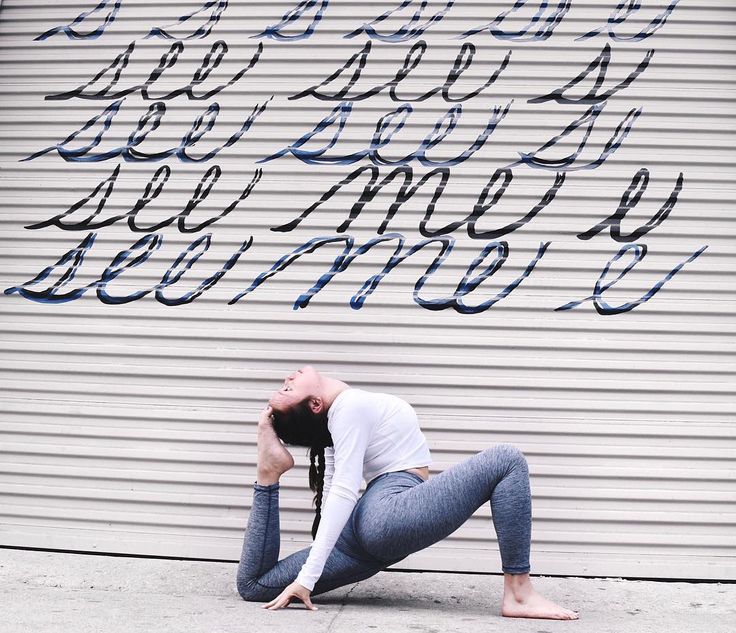 Starting position on all fours. Bend your back down and lift your head up, remaining in the position for 10-15 seconds. Arch your back up, lowering your head down. Hold the position for another 15 seconds. Repeat several times at a slow pace.
Starting position on all fours. Bend your back down and lift your head up, remaining in the position for 10-15 seconds. Arch your back up, lowering your head down. Hold the position for another 15 seconds. Repeat several times at a slow pace. - Spine, back of thighs . An exercise from the arsenal of yoga "Downward Dog". Place your feet and hands on the floor shoulder-width apart and bring them closer until you reach the body in an inverted V. The foot is completely on the floor, legs are straight. For greater effect in position, you can sway slightly, creating a arch in the back.
- Spine, core muscles . Lying on your stomach, bend your knees, bring your feet to your buttocks. Wrap your arms around your feet and pull your legs back and up. The thoracic spine takes the maximum deflection. The position is fixed for 20-30 seconds.
- Hip Extension .
 Lunge forward with your right foot and shift your weight onto it. Tilt your body forward and lean on your elbows. Maintain the position for up to 30 seconds. Repeat with the other leg.
Lunge forward with your right foot and shift your weight onto it. Tilt your body forward and lean on your elbows. Maintain the position for up to 30 seconds. Repeat with the other leg. - Lateral Thigh Extension . Sitting on the floor, spread your legs as wide as possible. Place your body and arms on the floor as far as possible. Stay in position for up to 30 seconds.
Tips from experienced choreographers for stretching
Flexibility exercises are performed at a calm pace, the muscles are stretched until a slight tolerable pain appears. In each position, you should stay up to 20-30 seconds, holding the maximum amplitude of the stretch.
For general flexibility development, it is enough to stretch 1-2 sessions per week as a small addition to the main workout. The presented set of flexibility exercises is one of the possible options for this form of training.
If increasing the flexibility of the body is the main task, then it is worth doing stretching in the format of a full-fledged lesson.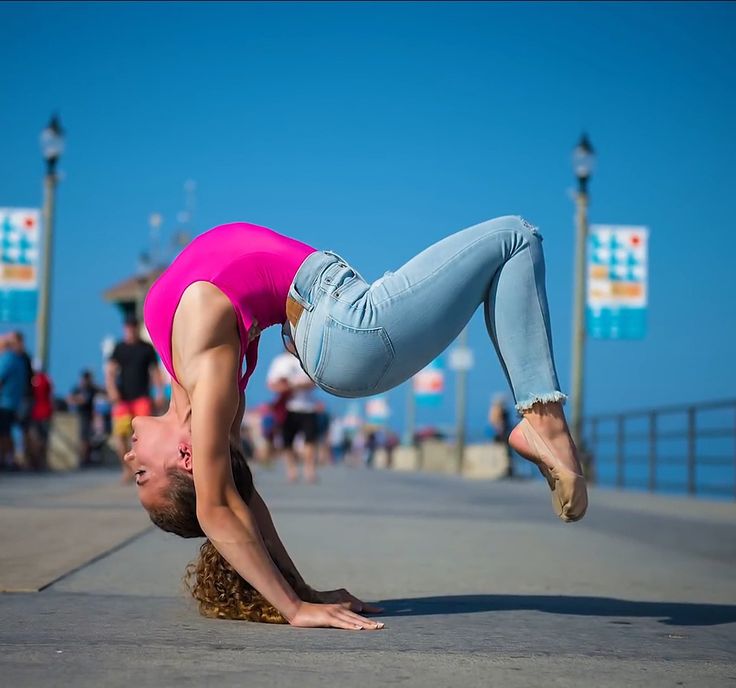 We recommend starting stretching under the guidance of an experienced instructor.
We recommend starting stretching under the guidance of an experienced instructor.
Benefits of working with a coach:
- safety : no risk of injury;
- effectiveness : the coach selects the exercises based on the physical data of the student;
- speed : a professional instructor uses techniques to achieve maximum results in the shortest possible time.
The dance studio "La Boca" is open for stretching and stretching. Classes are conducted by a professional ballerina Victoria Krivtsova and an international master of sports in Latin American dances Olga Dubravina. Lessons are held in small groups and with an individual approach to everyone.
Sign up for a trial session and experience the benefits of stretching with a professional.
How important it is to be flexible for dancers (and not only)
How important it is to be flexible for dancers (and not only)
How important it is to be flexible for dancers (and not only for them)
Today, many people dream of a beautiful stretch, and especially splits, and not only those who practice dancing. The studios and online stretching courses that have appeared in a large number actively support this trend.
The studios and online stretching courses that have appeared in a large number actively support this trend.
But how important is it to have a good stretch if you are dancing? Is it possible to start p ole dance if you are absolutely wooden, and will a good stretch help in social dancing? About this, and also about why everyone wants the cherished twine so much, what obstacles can be on the way to flexibility and how to prolong youth, "Plyas" talked with Anastasia Lan, a stretching teacher, and Artem Bagdanov, the founder of the largest publics about dancing and stretching in VKontakte and the founder of an online school for the development of flexibility.
August 31, 2020
Anastasia Lan
Artem Bogdanov
How important is it to be flexible when you start dancing?
Anastasia: It is not necessary to be flexible or start stretching first and only then any dances.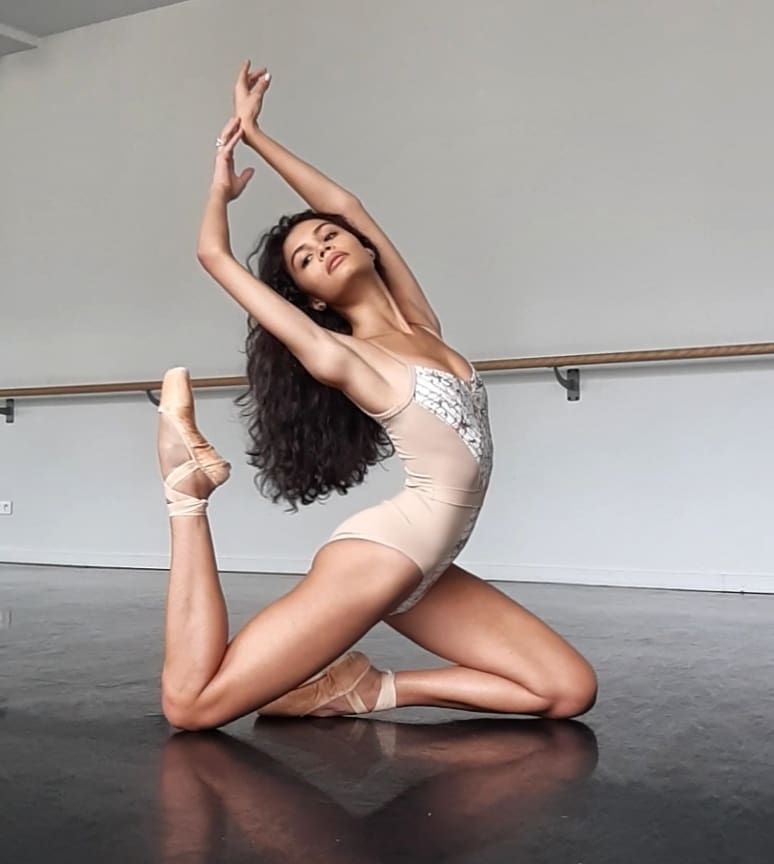 Even if these are the areas in which flexibility is needed - aerial gymnastics, canvases, pylon. At the initial stage, you can not have flexibility and good stretching, but develop it gradually.
Even if these are the areas in which flexibility is needed - aerial gymnastics, canvases, pylon. At the initial stage, you can not have flexibility and good stretching, but develop it gradually.
The question here is different. Before engaging in the development of amplitudes, it is important to restore the norms of movement, remove clamps and various compensations in the body. What is compensation? When we move in our daily life not as nature intended, but as we are used to, some of our muscles are activated more, others are not involved at all. We come to the hall, we start to move in the dance, our movement is unnatural due to the fact that our strong muscles are trying to compensate for the work of our weakened muscles. Efforts are distributed incorrectly and exorbitant loads may occur in different parts of the body. It's unhealthy.
I train and give students stretching through movement, active stretching, which helps bring the body into natural ranges of motion, engage the right muscles, strengthen them, distribute the load throughout the body.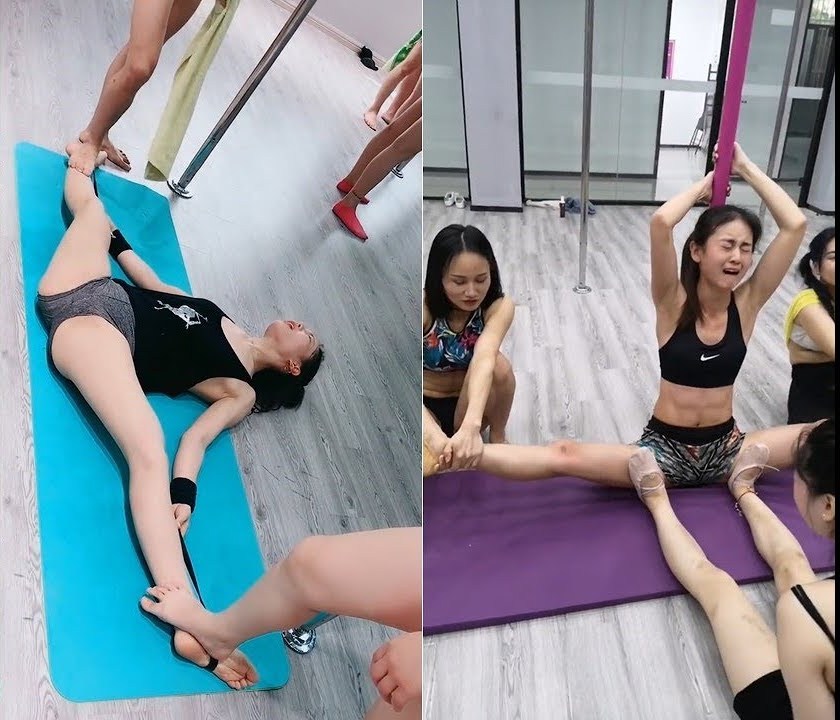 That is why it is very important to combine dancing with stretching. To adjust your body to a healthy, harmonious mode of movement.
That is why it is very important to combine dancing with stretching. To adjust your body to a healthy, harmonious mode of movement.
Artem: It doesn't matter at all to be flexible when you start dancing. Because when you start doing anything, your initial data at the time of the start practically does not matter much. What matters is what you learn along the way.
I have before my eyes a large number of examples of people who started dancing from scratch and were completely inflexible, non-plastic, non-rhythmic, non-musical, but gradually developed all these qualities.
And the topic “I'm inflexible, so I probably shouldn't start” is either a beautiful explanation not to do, or a kind of unspoken request to the interlocutor to support, cheer, dispel doubts.
“
When you start doing anything, your background at the time of the start is of little importance. What matters is what you learn in process
How important is stretching depending on a particular dance style?
Anastasia: In many directions, already mentioned aerial gymnastics, contemporary and even in ballroom dancing, stretching creates spectacle, opens ranges, expands the possibilities of movements. When you are not closed in any framework, you can impress the audience, the judges. Naturally, flexibility directly affects grace as well, and grace adds a lot to the scores.
When you are not closed in any framework, you can impress the audience, the judges. Naturally, flexibility directly affects grace as well, and grace adds a lot to the scores.
When you stretch, you educate your whole body, straighten your posture, shape lines. And even in such directions where super-amplitudes are not needed - for example, vogue, or oriental dances, hand movements, body movements become completely different when you develop flexibility. Movements become qualitatively different, and absolutely everyone notices this. Greater body control, greater precision, isolation, expressiveness.
Different people come to your classes. Tell me, why do they need stretching, what does it give them?
Anastasia: There are two categories of students. The first is dancers, aerialists (pylon, canvases), who already know why they need flexibility, and then apply it in their dance styles.
The second category is people who start stretching just to be more flexible. They begin to work with their body, begin to feel it softer, more mobile, and already from this state they begin to think how to apply it. And they decide to go either to dance directions, or they want something more extreme, like a pole and canvases. When a person acquires flexibility, he wants to use it.
“
When a person gains flexibility, he wants to use it
Why do many today want to “sit on the splits”, and not just improve general flexibility? How did it become a fixed idea?
Anastasia: There is a general trend - we all want results. For example, when we do fitness, we immediately want a sculpted body. But we don’t want to sit down 500 times, do push-ups 300 times and work out for six months.
When people come for stretching, it is important for them to see the final goal: what do I want from stretching.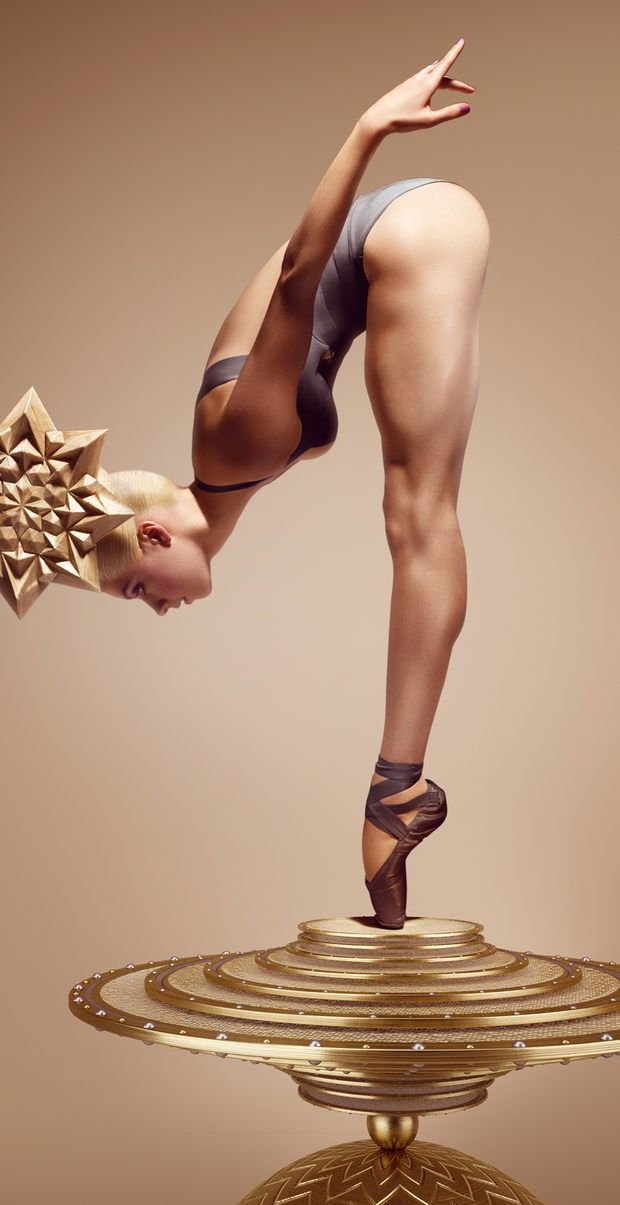 General flexibility is a vague concept and difficult to imagine. It is easier to present goals in specifics. And in specifics, we consider certain composite figures as goals, which for us are a familiar demonstration of flexibility - these are twines, bridges, puffs.
General flexibility is a vague concept and difficult to imagine. It is easier to present goals in specifics. And in specifics, we consider certain composite figures as goals, which for us are a familiar demonstration of flexibility - these are twines, bridges, puffs.
I come to the stretch, I try to imagine the end goal and I imagine the splits. And the reason why they want twine so much is most likely this. We are so accustomed to: in order to develop, we must see the final goal, where we are going.
Artem: Twine is a spectacular element. And, probably not a fixed idea, but a challenge idea. Moreover, this challenge was thrown a long time ago and came from the idols of the modern adult generation, who showed the world that flexibility is possible not only among ballerinas and gymnasts.
It used to be that twine is a gift from God and natural gifts. But then it turned out that this is not so.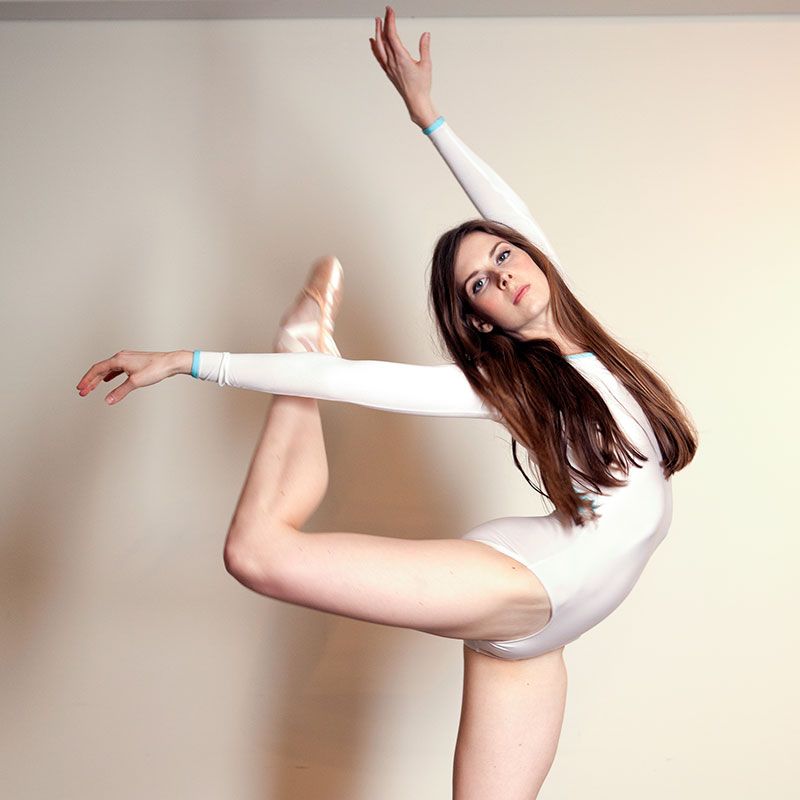 The first non-professional media performer of the twine was the Wolf from "Well, just you wait!", Which in issue 15 of 19At the age of 84, he demonstrated a longitudinal ballet split and a stretch. After him was Van Damme "Bloodsport", "Kickboxer", then there were Chuck Norris and Jackie Chan. And so this idea appeared in the minds of the male part of humanity. Interest was fueled by martial artists, karateka, masters of kung fu and yoga.
The first non-professional media performer of the twine was the Wolf from "Well, just you wait!", Which in issue 15 of 19At the age of 84, he demonstrated a longitudinal ballet split and a stretch. After him was Van Damme "Bloodsport", "Kickboxer", then there were Chuck Norris and Jackie Chan. And so this idea appeared in the minds of the male part of humanity. Interest was fueled by martial artists, karateka, masters of kung fu and yoga.
For example, when I was at school, the splits were performed by a man, a biology teacher, he studied in the wushu section, it was 1987, that is, before Van Damme.
At the end of the 90s, it was the turn of women - and in the cinema the splits were performed by Mila Jovovich, Charlize Theron, Uma Thurman. In the same way, at the end of the 20th century, bodybuilding was fashionable as an idea of developing the strength and image of a modern person, just as the idea of twine as a standard of flexibility is now popular.
What is the twine challenge? The fact that, on the one hand, everyone can come to this if they apply enough patience, discipline and effort, and on the other hand, not everyone can come to this, because they are simply not ready to do anything for this.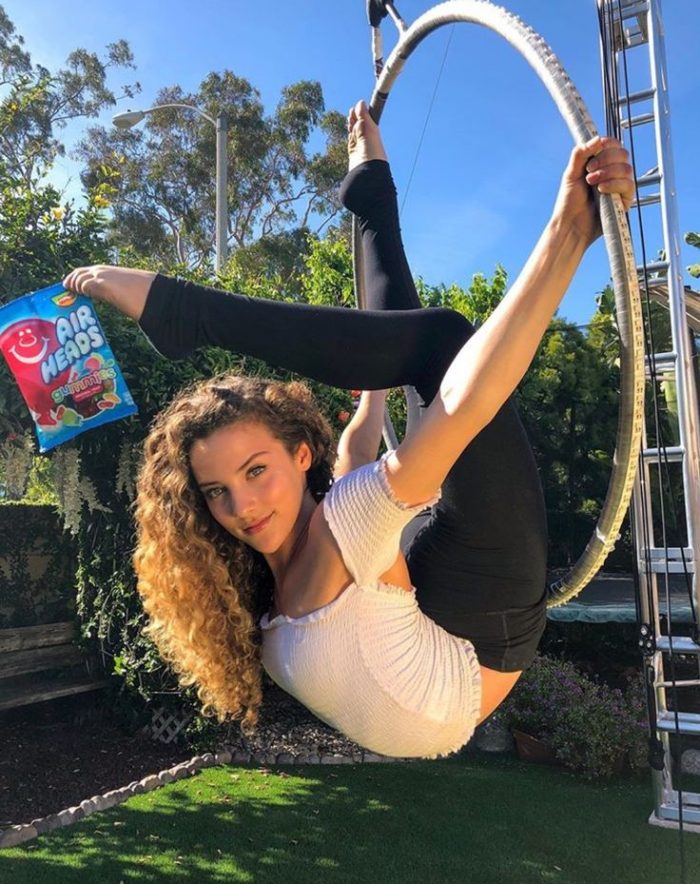 And this cannot be bought with money, but can be achieved only by one's own labor.
And this cannot be bought with money, but can be achieved only by one's own labor.
Today, twine is available to everyone, and I think that this is wonderful, because what used to be literally beyond the limits of human abilities, today has become possible and accessible to the most ordinary people thanks to the accumulated experience and modern knowledge about the human body.
“
It used to be that twine was a gift from God and natural gifts. But then it turned out that this is not so
Why is the idea of developing general flexibility less popular than the idea of twine?
Artem: I wouldn't say that. She is less specific. I would say that the split is an understandable, measurable and spectacular visualization. And an emotional reason to start improving yourself, your body, to improve. And when a student comes and plunges into the topic, then, as a rule, interest in twine is quickly replaced by other, more valuable interests and practical applications of these abilities, which are difficult to explain to an uninitiated person.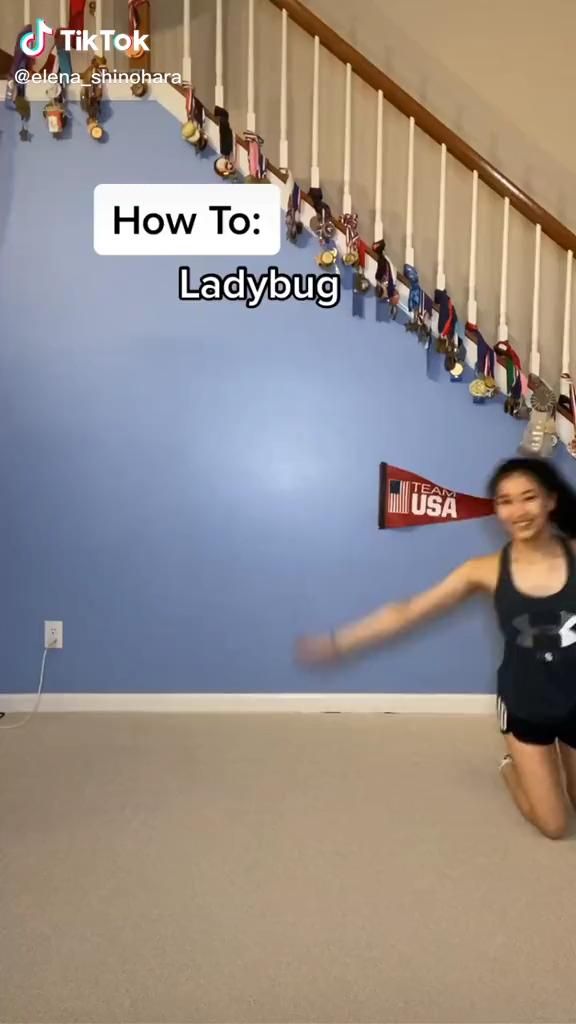 Therefore, the twine remains the hallmark of the development of flexibility.
Therefore, the twine remains the hallmark of the development of flexibility.
People more often come to the idea of developing flexibility as such at an older age, after they lose their former flexibility. And we have about half of these students. They don't need twine. They want to fully move and enjoy life.
Is it possible for everyone to stretch, or are there any limitations in terms of physiology or age?
Anastasia: Everyone can sit on the longitudinal twine, joints may not allow the transverse twine. But if we are talking about general flexibility, about the normal functioning of the body - this is available to everyone, and I would strongly recommend stretching for everyone.
Yes, maybe we have some kind of articular restrictions that will not allow us to “sit down” on the transverse or limit our limit in minus longitudinal ones, but it doesn’t matter.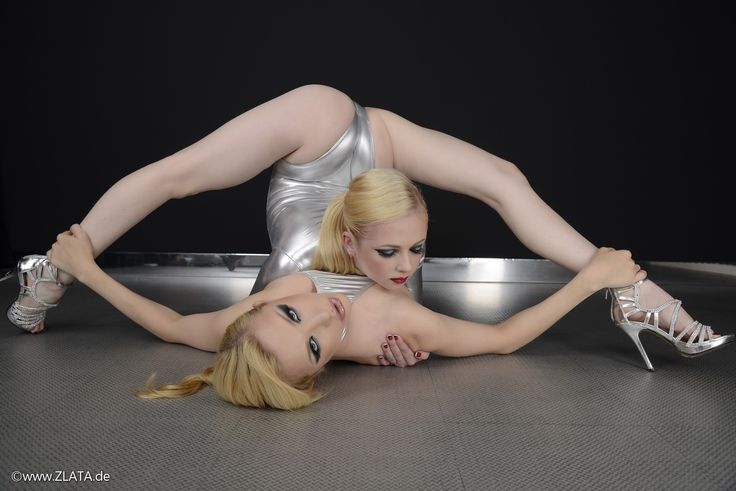 Because flexibility is not only splits right, left and transverse. Flexibility is a very multifaceted quality, and here you can develop in many directions. And there are even no contraindications for practicing reasonable stretching, especially stretching through the movement of the body, with the restoration of normal working amplitudes and norms of movement, which are absent due to the fact that we do not use our body as it is basically intended.
Because flexibility is not only splits right, left and transverse. Flexibility is a very multifaceted quality, and here you can develop in many directions. And there are even no contraindications for practicing reasonable stretching, especially stretching through the movement of the body, with the restoration of normal working amplitudes and norms of movement, which are absent due to the fact that we do not use our body as it is basically intended.
“
Everyone can sit on the longitudinal split
How important is flexibility in everyday life, outside of dance and sports?
Artem: Let's remember what flexibility is? This is the ability to make movements with maximum amplitude. We do not think about it when we are young, flexible, mobile and used to the fact that any movement is available to us by default. The child does not understand the importance of flexibility when he calmly takes his foot in his mouth or puts it behind his head, sits in Turkish or "bent over three deaths" at the desk.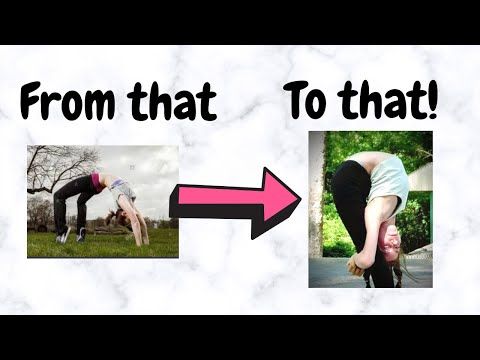 He has it by default from birth, and he does not know how to do it differently.
He has it by default from birth, and he does not know how to do it differently.
But due to various circumstances, flexibility fades over time. Sedentary lifestyle, generally low physical activity, injuries, illnesses, etc. And at some point, as they say, "bang - and you're a tree." Someone at 14, someone at 40, someone at 60. And a person often thinks about the importance of flexibility only after he loses it. For example, when he cannot raise his hand to turn off the light in the room, or raise his leg to put it in his pants.
Someone puts up with it, says at the age of 30 “old age is not a joy” and turns into a young old man or a young old woman. He continues to cherish his bad hypodynamic habits, endure pain, learns to live with pain, adapts to it, and by 50 he finally curls up into a bagel.
“
The child does not understand the importance of flexibility when he calmly puts his foot behind his head, sits in Turkish or “bent over three deaths” at a desk.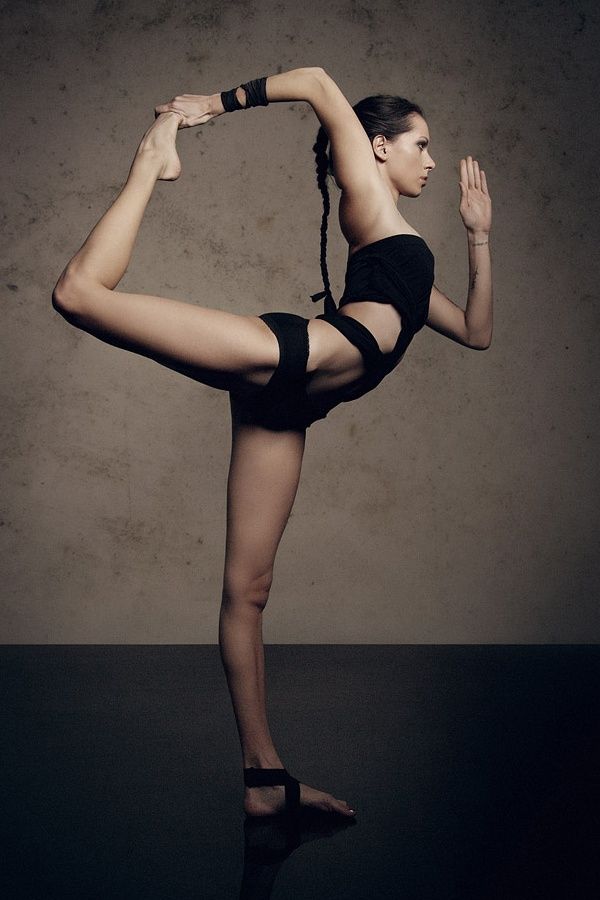 He has it by default from birth, and he does not know how to do it differently
He has it by default from birth, and he does not know how to do it differently
Before the invention of antibiotics, at 40-45 years old, a person was already considered an old man, and people lived 50-60 years. Now we are told the average duration is 80-90 years, and in the near future 100-120. And it's not science fiction. I visit my parents, they are already retired. And I say hello to their neighbors who are at least 15-20 years older and who were old when I went to school... 90 years is the reality of today.
And someone wants to remain young, active and mobile until old age. And the very idea is unacceptable to him that at 60-65 he will cease to be able to independently raise his hands up and then for 35 years he will ride in a wheelchair or walk with a walker.
Therefore, for example, WHO has long recommended that adults, in addition to daily activities and work, engage in physical activity of at least 75 minutes a week - aerobic exercise and strength exercises.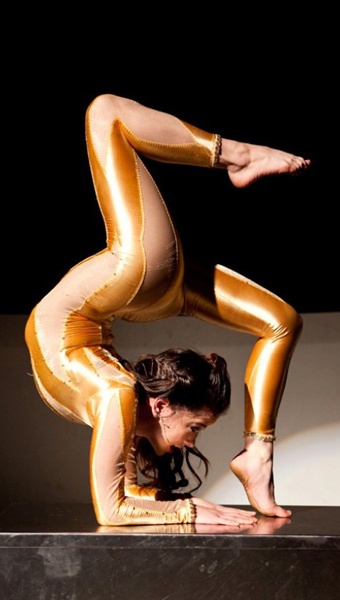 For additional health benefits - up to 300 minutes per week. And after 65, be sure to add exercises to develop flexibility and coordination to your workouts. Look around. By the age of 60-65, many people in the cities are no longer capable of any exercise, they would have to walk to the store, groaning on painkillers. Not to mention the development of flexibility.
For additional health benefits - up to 300 minutes per week. And after 65, be sure to add exercises to develop flexibility and coordination to your workouts. Look around. By the age of 60-65, many people in the cities are no longer capable of any exercise, they would have to walk to the store, groaning on painkillers. Not to mention the development of flexibility.
And among people who are dancing or active, I see a different picture - I see vigorous 80-year-old women dancing flamenco and doing yoga, I see 85-year-old men who ride scooters, go hiking, rafting on rafts.
Therefore, the issue of maintaining and developing flexibility as a healthy habit - the same as brushing your teeth - is a question of the quality of all life. And it is better to start doing it now, "so that later it would not be excruciatingly painful." Moreover, it is much more interesting than brushing your teeth. It's a matter of choice. The choice between pain and suffering, or happily ever after. And this is not a question of fate, but a question of "to do or not to do.


